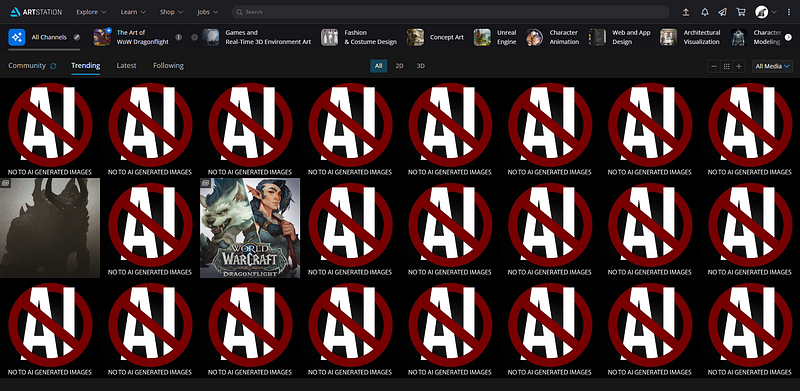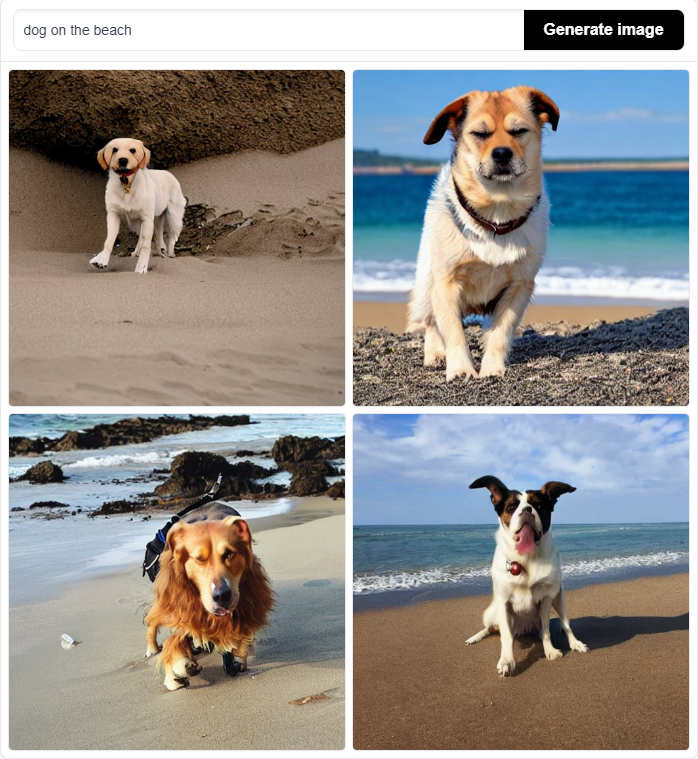Understanding the Controversy Surrounding AI-Generated Art
Written on
Chapter 1: The Rise of AI Art
AI-generated art has become a hot topic of discussion among artists and enthusiasts alike. Recently, platforms like ArtStation have seen a surge in protests against AI-generated images, with many artists expressing their discontent over the lack of policies regarding such content.

The current trending page on ArtStation showcases numerous pieces marked with a "no AI" symbol, highlighting the growing unrest within the community. As AI art generation technology advances, many artists find themselves facing an influx of AI-created works, raising concerns about the integrity of artistic expression.
As someone with a background in computer science and a passion for art, I can appreciate both sides of this complex debate.
Section 1.1: The Benefits of AI Art
AI-generated art offers intriguing possibilities. By training neural networks on vast datasets of images, these algorithms can create entirely new visuals based on given prompts. For instance, entering the phrase "dog on the beach" can yield numerous generated images, some of which may closely resemble real photographs.

While critics often highlight the drawbacks of AI art, its potential applications are significant. Fields such as game design, visual effects, and content creation for platforms like YouTube can benefit immensely from this technology.
One of the major advantages is that it lowers barriers to entry for individuals and small teams. Creating high-quality art can be a daunting, costly endeavor. For instance, in game development, the process of crafting art assets is often the most labor-intensive. AI-generated art can empower solo developers or smaller studios to produce projects that would otherwise be unattainable.
The term "democratization of art" aptly describes this shift. In the past, access to professional artistry was often limited to those who could afford it. Presently, AI-generated images are widely available and can be utilized to create distinctive assets for various projects.
Section 1.2: The Drawbacks and Concerns
Despite its potential, AI art raises numerous ethical and philosophical questions. A primary concern is whether algorithms can genuinely be considered creative. At present, the consensus seems to be that they cannot. These neural networks merely rearrange existing data rather than producing original thoughts or experiences.
Human artistry is often infused with personal narratives and emotions—elements that algorithms cannot replicate. While AI-generated visuals may surpass the quality of some human creations, they lack the stories and experiences behind them.
Artists argue that platforms like ArtStation should not host AI art. These sites serve as showcases for individual skills and creativity, and simply typing a prompt into a system hardly qualifies as artistic expression.
The protests against AI art also stem from a broader existential threat to the creative industry. While the immediate impact may not be felt, there is concern that AI could eventually outperform human artists, jeopardizing their careers and livelihoods.
Another pressing issue is the challenge of detecting AI-generated works. If ArtStation were to restrict or ban such submissions, how could they prevent dishonest individuals from uploading AI art as their own? This deception could undermine opportunities for genuine artists who cannot compete with the volume and skill of AI outputs.
Furthermore, the question of copyright looms large. Many neural networks are trained on copyrighted works without artists' consent. Users can request images in the style of renowned artists, but this raises questions about ownership and attribution. Should algorithms credit the artists whose work influenced the outputs? More importantly, who retains the copyright for these generated images?
Despite the controversy, AI-generated art is likely here to stay. Like many technological advancements, it will both create new opportunities and challenge existing norms. While more people will be able to produce visually appealing art, the demand for talented human artists will persist in the short to medium term.
AI-generated works should be restricted on platforms like ArtStation, ideally designated to their own sections. Unfortunately, some may still misrepresent AI creations as their own to gain an unfair advantage.
Ultimately, for many, art is a deeply personal endeavor, a hobby, and a passion. Regardless of the technical capabilities of algorithms, the essence of creating something unique and personal will always hold value.
Chapter 2: Perspectives from the Community
In the video "Why Artists are Fed Up with AI Art," various artists share their experiences and concerns regarding the impact of AI on their craft and livelihood.
Another insightful discussion can be found in "Pro Artist vs AI Art: maybe we can be friends?" which explores the potential coexistence of traditional artists and AI technology in the future.